7 Brilliant Kitchen Organization Ideas

A kitchen is a place that can quickly end up getting cluttered and messy, and it can become quite a chore to fix it up regularly. For this problem, use the following practical kitchen organization ideas and keep your kitchen neat, tidy, and well-maintained.
1. Learn To Declutter
The most important thing to do is rummage through your stuff and declutter. Rearranging stuff that you do not use takes up space and is useless. A cluttered kitchen never looks tidy, so make sure to sort out the things you want to use and remove the ones that do not add any value to your kitchen.
2. Stack Up The Pans And Pots
There are many different methods for stacking up your pots and pans, but the common way of nesting them within one another is still the one we find most efficient. While hanging them or neatly filing them may seem appealing, in practical terms, the first idea takes up the least space and is the easiest to cope with.
3. File The Cutting Boards
Filing the cutting boards is an excellent idea to give the kitchen a well-organized appearance while allowing you to take out things and keep them back quickly. Whenever you want to use something, you can do it without much hassle when it is filed correctly.
4. Use The Same Types Of Storage
One thing that can help make your containers look neat is if they are all of the same types. They give your kitchen a synchronized and uncluttered look and help elevate its appearance.
5. Use An Acrylic Napkin Holder
If you have a pile of napkins in your kitchen, they will look messy if they are on the loose. An intricate and sleek acrylic napkin holder can work well to give a perfect look to your kitchen. It will help organize your napkins while adding a touch of decor to your kitchen.
6. Get A Bin For Storage Containers
A bin can help keep your containers organized and cohesive – plus, it will take up minimum space. So, get a bin and stack up your containers nearly in it so that you get tons of things sorted in the slightest bit of space.
7. Get A Basket For The Cleaning Products
With the immense amount of cleaning products, you need a suitable sorting method for them. Baskets can work perfectly for them. Get all the dishwasher tabs, soaps, liquids, sponges, and steel wools and stack them neatly in a basket.
Final Thoughts
These are the seven brilliant ideas that can be used for your kitchen organization. Use them and give your kitchen a tidy appearance.
What is the best way to organize a kitchen?
The best way to organize a kitchen is to implement a zone-based system. Create designated areas for cooking, cleaning, food prep, and storage. Group similar items together and place them near where they'll be used. Utilize vertical space with shelves and hooks. Invest in drawer organizers and clear containers to maximize storage efficiency. Regularly declutter and reassess your organization to maintain an efficient kitchen layout.
How do I decide where to put things in my kitchen?
Decide where to put things in your kitchen based on frequency of use and logical workflow. Place everyday items like dishes and utensils in easily accessible locations. Store cooking tools near the stove and prep areas. Keep cleaning supplies close to the sink. Consider the kitchen work triangle (stove, sink, refrigerator) when arranging items. Use upper cabinets for less frequently used items and lower cabinets for heavier, often-used items.
How do I organize my kitchen with too much stuff?
To organize a kitchen with too much stuff, start by decluttering ruthlessly. Remove duplicate items, rarely used gadgets, and expired food. Implement smart storage solutions like pull-out organizers, lazy Susans, and stackable containers. Utilize vertical space with wall-mounted racks or over-the-door organizers. Consider rotating seasonal items into storage. Adopt a one-in-one-out policy to maintain organization and prevent future clutter.
How can I organize my kitchen smartly?
Organize your kitchen smartly by focusing on accessibility and efficiency. Use clear containers for pantry items to easily see contents. Implement a labeling system for quick identification. Maximize cabinet space with shelf risers and drawer dividers. Store items vertically when possible, using file organizers for baking sheets and cutting boards. Keep countertops clear by using wall-mounted magnetic strips for knives and hooks for frequently used utensils.
What is the 5 zone method?
The 5 zone method is a kitchen organization strategy that divides the space into five functional areas: Consumables (food storage), Non-consumables (dishes, utensils), Cleaning (sink, dishwasher), Preparation (countertops), and Cooking (stove, oven). This method ensures efficient workflow by grouping related items and activities together, minimizing movement and maximizing productivity in the kitchen.
How to design a kitchen layout?
To design an effective kitchen layout, start with the work triangle concept, positioning the sink, stove, and refrigerator for easy access. Consider traffic flow and allow enough space between elements. Plan for adequate counter space, especially near major appliances. Incorporate storage solutions that maximize space efficiency. Balance aesthetics with functionality, choosing materials and finishes that are both attractive and practical. Don't forget to plan for proper lighting in all work areas.
What is the golden rule for kitchen design?
The golden rule for kitchen design is the work triangle. This principle states that the three main work areas in a kitchen (sink, stove, and refrigerator) should form a triangle for maximum efficiency. The sum of the triangle's three sides should be between 13 and 26 feet, with no single side longer than 9 feet. This rule ensures a comfortable and efficient workflow, reducing unnecessary movement and making cooking tasks more streamlined.
What is the number one rule in any kitchen?
The number one rule in any kitchen is cleanliness and food safety. This encompasses regular cleaning, proper food storage, and maintaining hygienic practices during food preparation. It involves washing hands frequently, sanitizing surfaces, storing raw and cooked foods separately, and ensuring proper temperature control. This rule is crucial not only for maintaining a pleasant cooking environment but also for preventing foodborne illnesses and ensuring the health of those who eat from the kitchen.
What is the proper way to set up a kitchen?
The proper way to set up a kitchen involves creating an efficient and functional space. Start by establishing the work triangle (sink, stove, refrigerator). Arrange storage areas logically, with frequently used items easily accessible. Ensure adequate counter space for food preparation. Plan for proper lighting, including task lighting in work areas. Include a mix of storage options like drawers, cabinets, and open shelving. Consider ergonomics in the placement of appliances and work surfaces. Finally, incorporate a waste management system for easy cleaning and recycling.
Where do dishes go in a kitchen?
Dishes should be stored in a location that balances accessibility and protection. Ideally, place them near the dishwasher or sink for easy unloading and use. Upper cabinets or open shelving near the dining area can be convenient. For daily-use dishes, consider lower cabinets or drawers for easy reach. Use plate racks or vertical organizers to maximize space and prevent chipping. Store heavier items like casserole dishes in lower cabinets to avoid overhead lifting.
How many drawers do you need in a kitchen?
The number of drawers needed in a kitchen depends on its size and your storage needs, but a general guideline is to aim for at least 12 to 15 drawers. Include a mix of shallow drawers for utensils and deeper drawers for pots and pans. Consider specialized drawers like spice drawers, cutlery inserts, and pull-out trash bins. Drawers offer better accessibility than cabinets for many items, so incorporating more drawers can significantly enhance kitchen functionality and organization.
How do I tidy up my kitchen?
To tidy up your kitchen effectively, start with a clean slate by clearing countertops and tables. Put away all items in their designated places. Wipe down surfaces, including appliances and cabinet fronts. Clean the sink and load the dishwasher. Sweep or vacuum the floor, followed by mopping if needed. Regularly declutter by removing expired foods and rarely used items. Establish a daily quick-clean routine to maintain tidiness, such as wiping counters and putting away dishes after each meal.
What are the 4 steps to organizing a kitchen?
The 4 steps to organizing a kitchen are:
- Declutter: Remove unnecessary items, duplicates, and expired goods.
- Categorize: Group similar items together (e.g., baking supplies, spices).
- Assign Zones: Designate specific areas for different activities (cooking, cleaning, storage).
- Implement Storage Solutions: Use organizers, containers, and labels to maintain order.
This systematic approach ensures a thorough and lasting organization of your kitchen space.
How to decide where to put things in kitchen cabinets?
Decide where to put things in kitchen cabinets by considering frequency of use and logical workflow. Place everyday items at eye level or in easily accessible lower cabinets. Store less frequently used items in higher cabinets or hard-to-reach corners. Group similar items together (e.g., baking supplies, breakfast items). Keep heavy items in lower cabinets and lighter items up high. Place items near where they'll be used (e.g., spices near the stove). Use drawer organizers and shelf risers to maximize space and keep items visible.
Where to keep plates in the kitchen?
Plates are best kept in a location that's easily accessible and close to where they'll be used. Upper cabinets near the dishwasher or sink are ideal for easy unloading and storage. Alternatively, a drawer with plate pegs can provide secure storage and easy access. For a more open look, consider open shelving near the dining area. If space allows, a plate rack or vertical organizer can be an efficient and attractive storage solution. Always ensure the storage location can support the weight of your plates securely.
Is the 5 3 1 method good?
The 5-3-1 method is an effective approach for decision-making and productivity. In kitchen organization, it can be adapted as follows: Choose 5 areas to organize, focus on 3 key improvements in each area, and tackle 1 task at a time. This method helps break down the overwhelming task of kitchen organization into manageable steps, ensuring steady progress and preventing burnout. It's particularly useful for those who feel overwhelmed by the prospect of organizing their entire kitchen at once.
What is the danger zone method?
The danger zone method refers to food safety practices rather than organization. It emphasizes keeping food out of the "danger zone" temperature range (between 40°F and 140°F or 4°C and 60°C) where bacteria multiply rapidly. In kitchen organization, this concept can be applied by ensuring proper storage of perishables, maintaining refrigerator and freezer organization for optimal temperature control, and arranging the kitchen to facilitate quick and safe food handling to minimize time in the danger zone.
What is the 3 zone approach?
The 3 zone approach to kitchen organization divides the space into three main areas:
- Consumables Zone: For food storage (pantry, refrigerator).
- Non-Consumables Zone: For dishes, utensils, and cookware.
- Cleaning Zone: For sink, dishwasher, and cleaning supplies.
This simplified version of the 5 zone method focuses on the core functions of a kitchen, making it easier to implement in smaller spaces or for those new to kitchen organization.
What is the 3x4 kitchen rule?
The 3x4 kitchen rule is a guideline for efficient kitchen layout. It suggests that the three main work centers (sink, stove, and refrigerator) should be no more than 4 steps apart from each other. This rule ensures that the kitchen's work triangle is compact enough for efficient movement but spacious enough to prevent crowding. It's particularly useful when designing or remodeling a kitchen to optimize workflow and functionality.
What is the most ideal kitchen layout?
The most ideal kitchen layout depends on the space available and individual needs, but the L-shaped kitchen is often considered highly efficient. It provides a good work triangle, ample counter space, and clear traffic flow. For larger spaces, a U-shaped kitchen or island kitchen can offer even more functionality. The key is to ensure the work triangle (sink, stove, refrigerator) is efficient, there's adequate counter space for preparation, and storage is easily accessible. The ideal layout should balance functionality with the aesthetic preferences of the homeowner.
What is the ideal kitchen triangle?
The ideal kitchen triangle is a concept in kitchen design that positions the three main work areas - sink, stove, and refrigerator - in a triangle formation. The sum of the three sides of the triangle should be between 13 and 26 feet, with no single side longer than 9 feet. This arrangement minimizes walking distance between these key areas, enhancing efficiency in food preparation and cooking. The triangle should be free of obstacles and major traffic paths for optimal functionality. This concept forms the foundation of efficient kitchen design and workflow.
What is the triangle Law kitchen?
The triangle Law kitchen, also known as the kitchen work triangle, is a fundamental principle in kitchen design. It positions the three main work areas - sink, stove, and refrigerator - in a triangular formation. The ideal distance between these points should total between 13 and 26 feet, with no single side exceeding 9 feet. This layout minimizes unnecessary movement, enhancing efficiency in food preparation and cooking.
What is the 60 30 10 rule for kitchens?
The 60-30-10 rule for kitchens is a color scheme guideline that creates visual balance. It suggests using 60% of a dominant color (usually a neutral tone for cabinets or walls), 30% of a secondary color (often for countertops or backsplashes), and 10% for accent colors (in accessories or small appliances). This rule helps create a cohesive and aesthetically pleasing kitchen design while allowing for personal style expression.
What is the number one rule in the kitchen?
The number one rule in the kitchen is cleanliness and food safety. This encompasses regular cleaning, proper food storage, and maintaining hygienic practices during food preparation. It involves washing hands frequently, sanitizing surfaces, storing raw and cooked foods separately, and ensuring proper temperature control. This rule is crucial not only for maintaining a pleasant cooking environment but also for preventing foodborne illnesses.
What is the basic rule of kitchen?
The basic rule of kitchen design and operation is efficiency. This means organizing the space to minimize unnecessary movement, storing items near where they're used, and maintaining a clean, uncluttered environment. It also involves proper food handling and storage practices, regular cleaning, and ensuring all equipment is in good working order. Efficiency in the kitchen leads to safer, more enjoyable cooking experiences.
What is the kitchen rule?
The kitchen rule, often referred to as the kitchen work triangle, is a design principle that positions the sink, stove, and refrigerator in a triangular layout. This arrangement aims to create an efficient workspace by minimizing the distance between these key areas. The rule suggests that the sum of the triangle's three sides should be between 13 and 26 feet, with no single side longer than 9 feet, ensuring a comfortable and productive cooking environment.
What is rule number 1 of cooking?
Rule number 1 of cooking is mise en place, which means "everything in its place." This French culinary phrase emphasizes the importance of preparing and organizing all ingredients and equipment before starting to cook. It involves measuring ingredients, chopping vegetables, and setting up necessary tools. This practice ensures a smooth cooking process, reduces stress, and helps prevent mistakes or forgotten ingredients during meal preparation.
How to best organize a kitchen?
To best organize a kitchen, implement a zone-based system. Create designated areas for cooking, cleaning, food prep, and storage. Group similar items together and place them near where they'll be used. Utilize vertical space with shelves and hooks. Invest in drawer organizers and clear containers to maximize storage efficiency. Regularly declutter and reassess your organization to maintain an efficient kitchen layout. Consider the work triangle principle when arranging major appliances and work areas.
Where to put glasses in the kitchen?
Glasses should be stored in a location that's easily accessible and close to where they'll be used. Upper cabinets near the sink or refrigerator are ideal for easy access to water or beverages. If space allows, open shelving can provide a stylish and convenient storage option. For families with children, consider storing everyday glasses in lower cabinets or drawers for safe, easy reach. Always ensure the storage location can support the weight of your glassware securely.
How to optimise kitchen layout?
To optimize kitchen layout, start with the work triangle concept, positioning the sink, stove, and refrigerator for easy access. Consider traffic flow and allow enough space between elements. Plan for adequate counter space, especially near major appliances. Incorporate storage solutions that maximize space efficiency. Balance aesthetics with functionality, choosing materials and finishes that are both attractive and practical. Don't forget to plan for proper lighting in all work areas and consider adding an island for extra workspace if room allows.
How to organize kitchen cupboards and drawers?
Organize kitchen cupboards and drawers by grouping similar items together. Use drawer dividers and shelf organizers to maximize space. Store frequently used items at eye level or in easily accessible lower cabinets. Place heavier items in lower cabinets and lighter items up high. Implement a system of clear containers or labels for easy identification. Consider pull-out organizers for corner cabinets to utilize hard-to-reach spaces. Regularly declutter and reassess your organization to maintain an efficient system.
Do you leave dishes in the sink?
Leaving dishes in the sink is generally not recommended. It can create a breeding ground for bacteria, attract pests, and make the kitchen look untidy. Instead, aim to wash dishes immediately after use or load them directly into the dishwasher. If you must leave dishes, rinse them first to prevent food from drying and hardening. Establishing a habit of cleaning as you go helps maintain a hygienic and organized kitchen environment.
How to plan a kitchen?
To plan a kitchen, start by assessing your needs and lifestyle. Consider the work triangle principle for efficient layout. Measure your space accurately and plan for adequate storage and counter space. Choose appliances that fit your cooking style and space constraints. Consider lighting, both task and ambient. Select materials and finishes that balance aesthetics with durability and ease of maintenance. Don't forget to plan for proper ventilation and electrical outlets. If possible, consult with a professional designer for optimal results.
Is it better to have doors or drawers in a kitchen?
The choice between doors and drawers in a kitchen depends on your specific needs, but generally, a combination of both is ideal. Drawers offer better accessibility and organization for smaller items like utensils, cutlery, and small appliances. They're particularly useful in lower cabinets. Doors work well for larger items, upper cabinets, and corner storage. Many modern kitchens are incorporating more drawers, especially in lower cabinets, for their ease of use and efficient storage capabilities.
How many cupboards do I need in my kitchen?
The number of cupboards needed in a kitchen depends on its size and your storage needs. A general guideline is to aim for at least 12 to 15 linear feet of cabinet space for a small to medium-sized kitchen. This typically includes a mix of base cabinets, wall cabinets, and possibly tall cabinets or a pantry. Consider your cooking habits, the number of people in your household, and the amount of kitchenware and appliances you own when determining the right amount of cabinet space for your needs.
Are drawers better than cupboards in a kitchen?
Drawers often prove more efficient than cupboards in many kitchen applications. They offer better visibility and accessibility, especially for lower storage areas. Drawers can be pulled out fully, allowing easy access to items at the back. They're particularly useful for storing smaller items like utensils, cutlery, and small appliances. However, cupboards still have their place, especially for larger items and in upper areas. The ideal kitchen usually incorporates a mix of both drawers and cupboards to maximize functionality and storage options.
How to organize a messy kitchen?
To organize a messy kitchen, start by decluttering - remove unnecessary items, expired foods, and rarely used gadgets. Next, deep clean all surfaces. Implement a zone-based organization system, grouping similar items together. Invest in storage solutions like drawer organizers, shelf risers, and clear containers. Maximize vertical space with hooks and wall-mounted racks. Establish a "everything has its place" rule and maintain it daily. Regular quick clean-ups and periodic reassessment of your organization system will help keep the kitchen tidy long-term.
In what order should I clean the kitchen?
When cleaning the kitchen, follow this efficient order:
- Clear and declutter surfaces
- Soak any dishes or tough stains
- Wipe down and disinfect countertops and appliances
- Clean the stovetop and oven
- Tackle the sink and faucet
- Clean inside the microwave and refrigerator
- Wipe cabinet fronts and handles
- Sweep and mop the floor
- Empty the trash
This top-to-bottom approach ensures a thorough clean without re-dirtying already cleaned areas.
How to have a minimalist kitchen?
To achieve a minimalist kitchen, focus on functionality and simplicity. Keep only essential items and remove single-use gadgets. Opt for high-quality, multi-purpose tools. Choose a neutral color palette with clean lines in your design. Utilize hidden storage to keep countertops clear. Invest in stackable, matching food storage containers. Regularly declutter and avoid unnecessary purchases. Display only a few carefully chosen decorative items. Remember, in a minimalist kitchen, every item should serve a purpose or bring joy.
How do I decide where to put things in my kitchen?
Decide where to put things in your kitchen based on frequency of use and logical workflow. Place everyday items like dishes and utensils in easily accessible locations. Store cooking tools near the stove and prep areas. Keep cleaning supplies close to the sink. Consider the kitchen work triangle (stove, sink, refrigerator) when arranging items. Use upper cabinets for less frequently used items and lower cabinets for heavier, often-used items. Group similar items together for easy access and efficient use of space.
How to organize a fridge?
Organize your fridge by creating designated zones. Store dairy on upper shelves, meats on the bottom shelf to prevent drips, and fruits and vegetables in crisper drawers. Use the door for condiments and drinks. Implement clear containers or bins to group similar items. Label and date leftovers to prevent waste. Clean and reorganize weekly, discarding expired items. Keep frequently used items at eye level. Consider using a lazy Susan for easy access to items at the back of shelves.
How do chefs organize kitchen?
Professional chefs organize kitchens based on efficiency and workflow. They implement a strict mise en place system, preparing and organizing ingredients before cooking. Workstations are set up for specific tasks (e.g., prep, cooking, plating). Tools and equipment are stored near where they're used. Ingredients are clearly labeled and dated. A clean-as-you-go policy is strictly enforced. Chefs often use the French brigade system, assigning specific roles and areas to each team member for smooth operation.
How do I arrange my kitchen?
Arrange your kitchen by first considering the work triangle (sink, stove, refrigerator). Ensure these key areas are easily accessible. Create zones for different activities: cooking, prep, cleaning, and storage. Place frequently used items within easy reach. Utilize vertical space with shelving and hooks. Keep countertops clear of clutter. Store items near where they'll be used. Consider traffic flow and leave enough space for comfortable movement. Balance functionality with aesthetics to create a kitchen that's both efficient and pleasant to use.
Should food go in upper or lower cabinets?
Food storage is generally more efficient in lower cabinets or a pantry. This arrangement allows for better visibility and easier access, especially for heavier items like canned goods or bulk ingredients. Upper cabinets can be used for lighter, less frequently used food items or dishes. However, if using upper cabinets for food storage, consider installing pull-down shelves for better accessibility. Always store perishables in the refrigerator and keep dry goods in airtight containers to maintain freshness.
Should all cabinets be the same throughout the house?
While cabinets don't need to be identical throughout the house, maintaining some consistency in style or color can create a cohesive look. In the kitchen, it's common to have matching cabinets for a unified appearance. However, you can introduce variety by using different finishes or colors for island cabinets or upper vs. lower cabinets. In other areas of the house, cabinets can vary to suit the room's function and style, but should still complement the overall home design for a harmonious feel.
Where should pots and pans be stored in the kitchen?
Pots and pans should be stored in a location that's easily accessible and close to the cooking area. Lower cabinets near the stove are ideal, preferably with pull-out organizers for easy access. Hanging pots and pans on a wall-mounted rack or ceiling-mounted pot rack can save cabinet space and add a decorative element. For those with limited space, consider nesting pots and storing lids separately in a vertical organizer. The key is to keep these essential items within easy reach while cooking.
Where to put utensils in a kitchen without drawers?
In a kitchen without drawers, there are several creative solutions for utensil storage:
- Use countertop utensil holders or crocks
- Install a wall-mounted magnetic strip for metal utensils
- Hang a pegboard with hooks for various utensils
- Utilize over-the-cabinet-door organizers
- Install pull-out organizers in cabinets
- Use hanging baskets on the wall or under cabinets
- Implement a utensil carousel on the countertop
These solutions keep utensils accessible while maximizing available space.
What is the 5 zone method?
The 5 zone method is a kitchen organization strategy that divides the space into five functional areas:
- Consumables Zone: For food storage (pantry, refrigerator)
- Non-Consumables Zone: For dishes, utensils, and cookware
- Cleaning Zone: For sink, dishwasher, and cleaning supplies
- Preparation Zone: For countertops and cutting boards
- Cooking Zone: For stove, oven, and microwave
This method ensures efficient workflow by grouping related items and activities together, minimizing movement and maximizing productivity in the kitchen
What is the best way to organize your kitchen?
The best way to organize your kitchen involves:
- Decluttering and removing unused items
- Grouping similar items together
- Using vertical space with shelves and racks
- Implementing a zone system for different activities
- Investing in clear containers for pantry items
- Labeling everything for easy identification
How to organize food in a kitchen?
Organize food in your kitchen by:
- Categorizing items (e.g., grains, snacks, canned goods)
- Using clear, airtight containers for bulk items
- Implementing the FIFO (First In, First Out) method
- Labeling containers and shelves
- Utilizing door organizers for spices and small items
- Rotating stock regularly to prevent expiration
How to arrange a beautiful kitchen?
Create a beautiful kitchen arrangement by:
- Choosing a cohesive color scheme
- Decluttering countertops for a clean look
- Adding plants or herbs for a fresh touch
- Using decorative storage solutions
- Installing good lighting to enhance the space
- Displaying attractive cookware or dishes
How to properly layout a kitchen?
Properly layout a kitchen with:
- The work triangle concept (sink, stove, refrigerator)
- Adequate counter space between major appliances
- Proper lighting for all work areas
- Efficient storage solutions near relevant areas
- Clear pathways for easy movement
- Designated zones for prep, cooking, and cleaning
How to setup a kitchen?
Set up a kitchen by:
- Assessing your needs and cooking habits
- Planning your layout based on the work triangle
- Organizing essentials in easily accessible places
- Stocking up on basic pantry items and tools
- Creating zones for different activities
- Personalizing the space with decor and color
How to organize a food list?
Organize a food list by:
- Categorizing items (produce, dairy, meats, etc.)
- Grouping by store layout for efficient shopping
- Using a digital app for easy updates and sharing
- Prioritizing frequently used items
- Including quantities needed for each item
- Noting dietary requirements or preferences
How to arrange kadai in kitchen?
Arrange kadai (Indian woks) in the kitchen by:
- Nesting different sizes together to save space
- Using a vertical pot rack or wall-mounted storage
- Storing lids separately with a lid organizer
- Keeping them near the stove for easy access
- Protecting the surface with cloth or paper towels between stacked kadai
- Labeling storage areas for quick identification
How is a professional kitchen organized?
Professional kitchens are organized with:
- Strict adherence to food safety regulations
- Efficient workflow design based on cooking processes
- Clear labeling and dating systems
- Designated stations for different types of food prep
- Easy-to-clean surfaces and equipment
- Logical storage systems for ingredients and tools
How do you arrange your local kitchen?
Arrange a local kitchen by:
- Adapting to available space and layout
- Incorporating local cooking styles and equipment
- Maximizing natural light and ventilation
- Using locally sourced storage solutions
- Displaying regional cookware or ingredients
- Creating a spice station for commonly used local spices
Related Blog Posts
Vintage Kitchen Trends You’ll Fall In Love with
7 Kitchen Island Design Tips to Make Your Kitchen Irresistible
8 Kitchen Design Tips to Make Your Kitchen Look Brilliant
Related Rug Collections




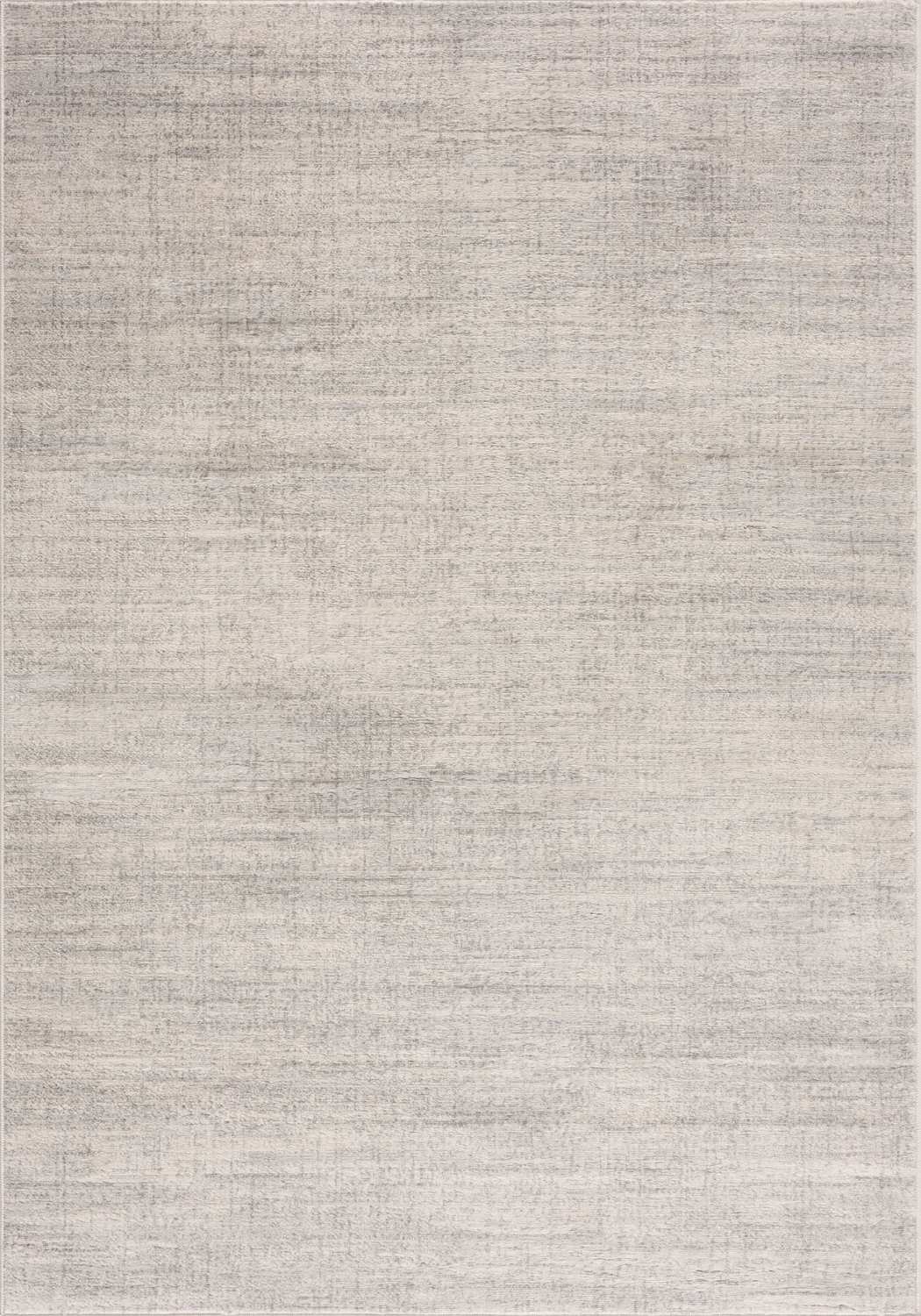
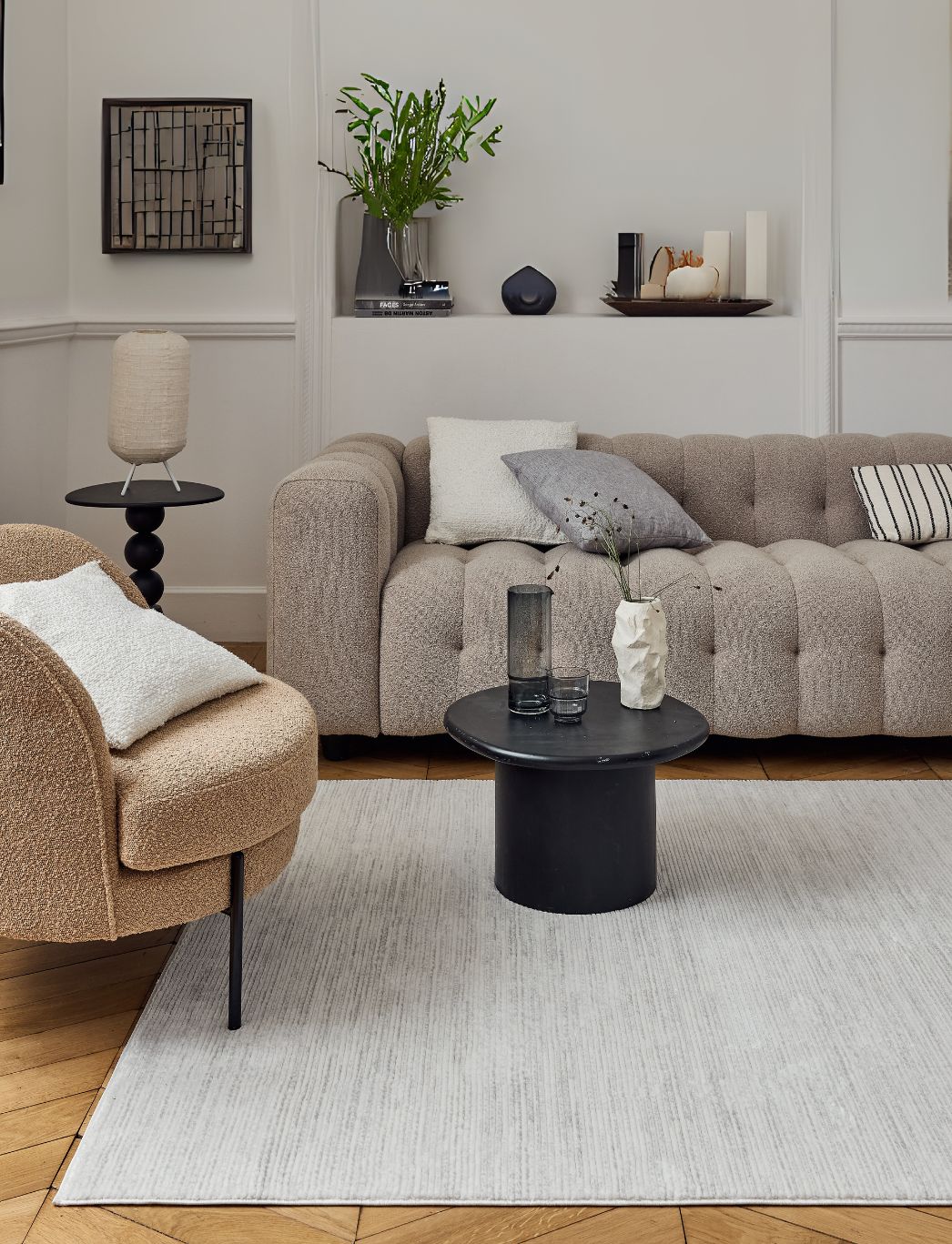

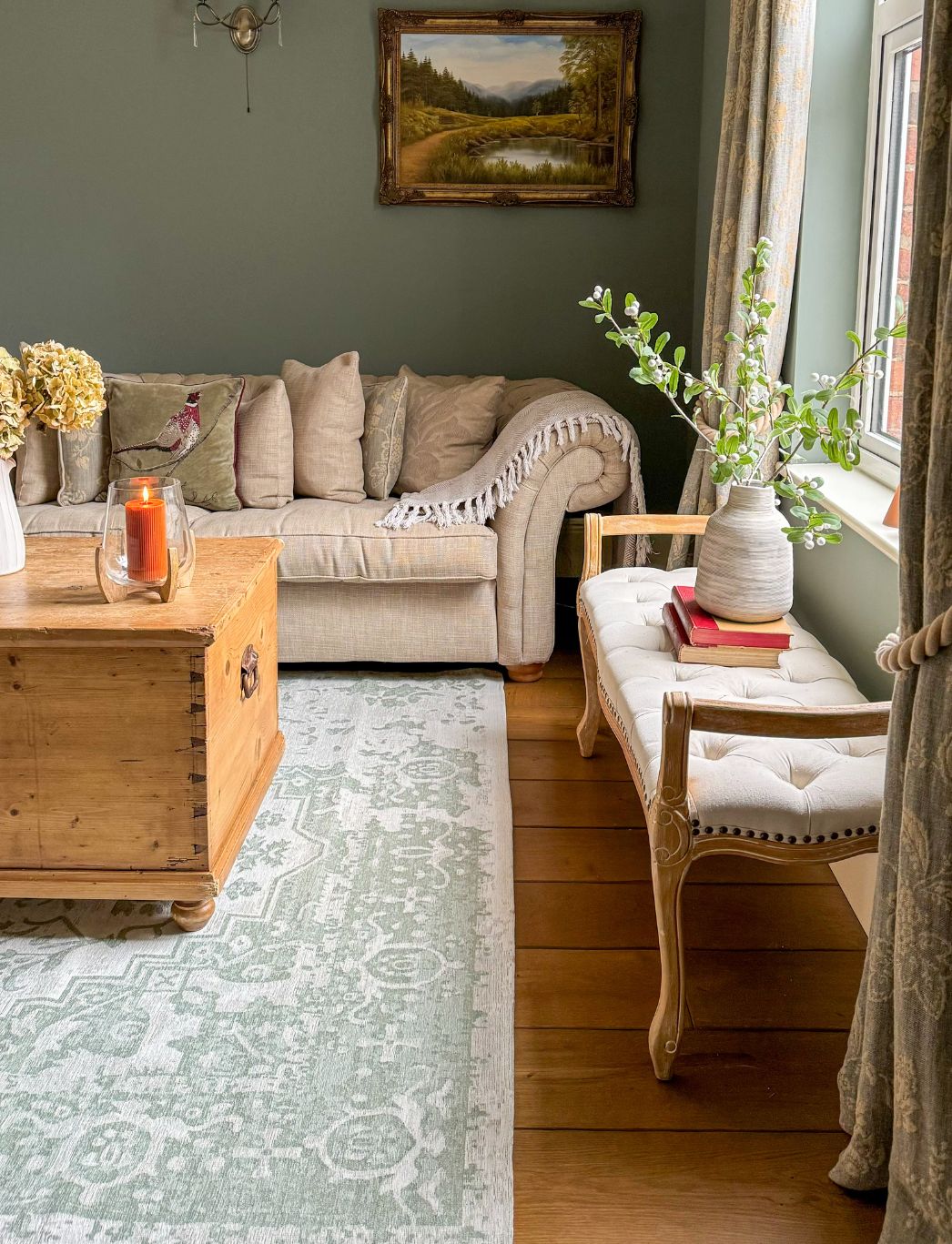
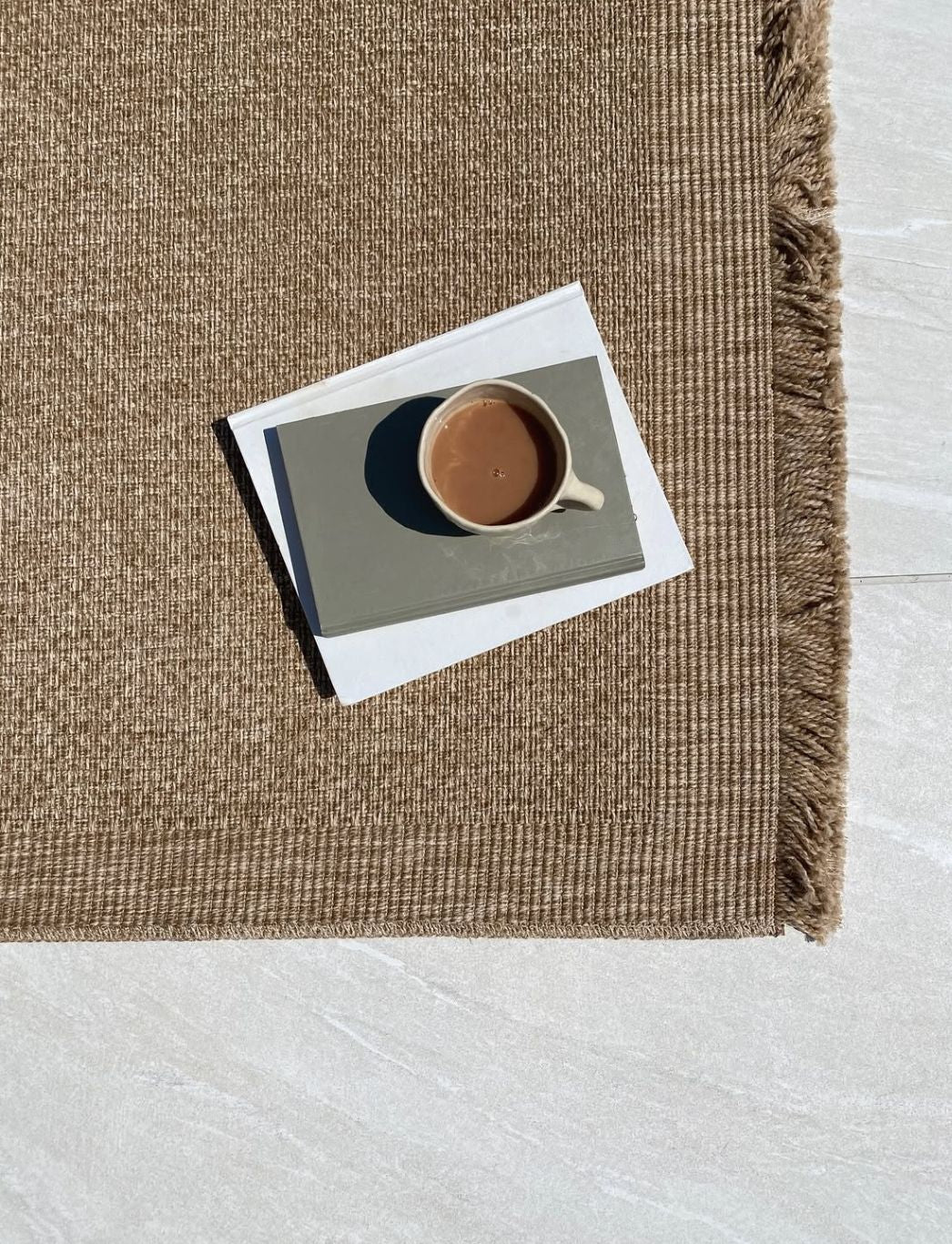
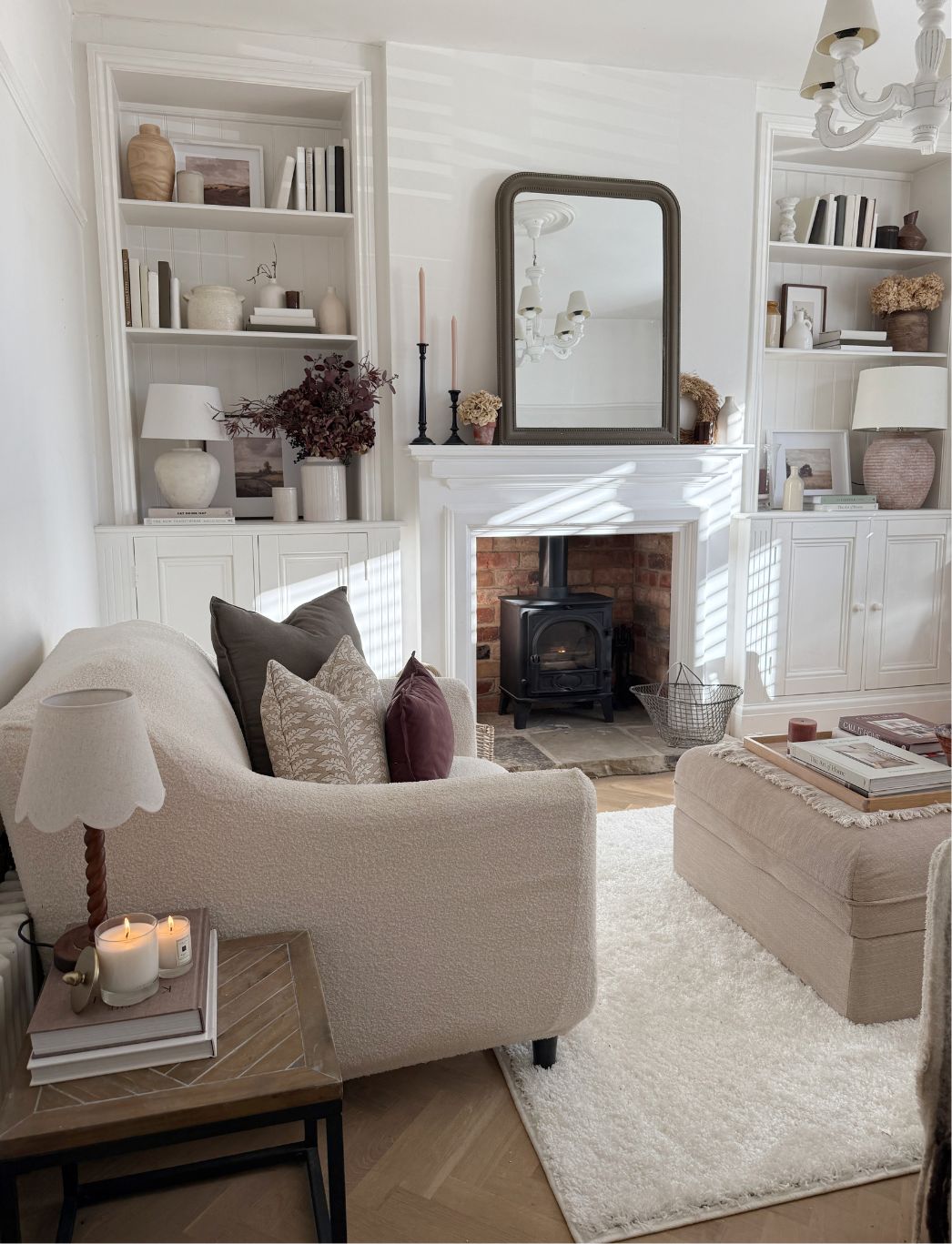
Leave a comment